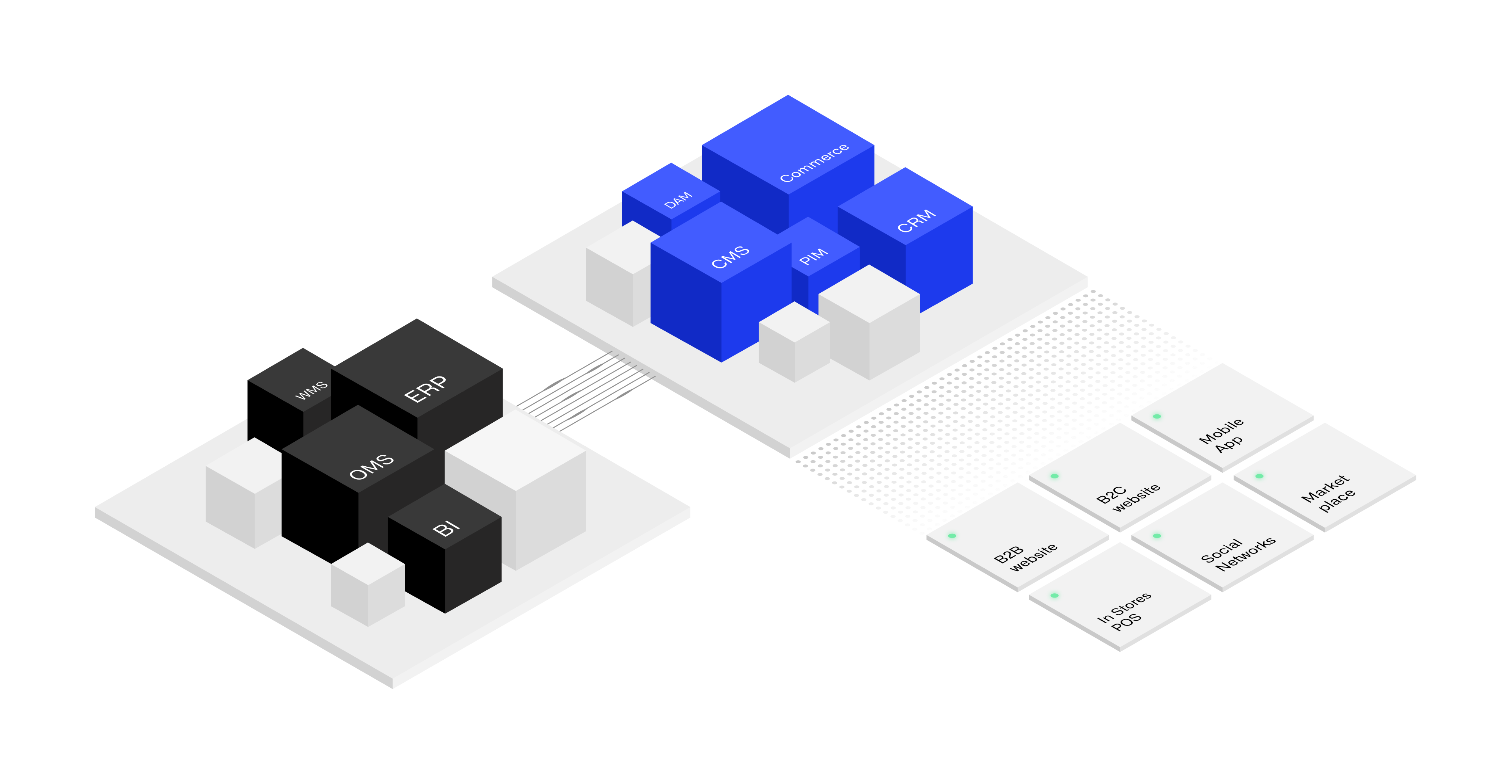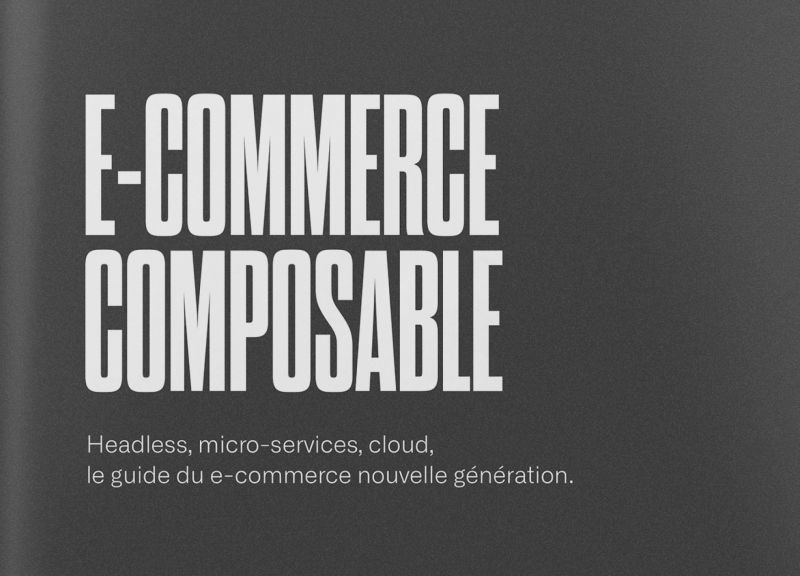For the past fifteen years, eCommerce has been built on the basis of "monolithic" solutions. Big applications with a lot of functionalities, but which are difficult to use, to maintain or to make evolve.
To compensate for this inflexible "all-in-one" approach, publishers have successfully positioned themselves on very specific tasks in the e-commerce process: online assistance, customer reviews, loyalty programs, delivery information, statistics, payment methods, tax calculation, etc. A "best-of-breed" approach rather than a general platform. These specialists focus on a limited perimeter with the objective of offering a more efficient service.
At the same time, sales channels have multiplied: mobile applications, social networks, marketplaces, digital terminals, voice-activated devices... The customer experience is lived through several contact points, each with its own commercial opportunities.
The e-commerce architecture is therefore increasingly fragmented. It relies on several variables: platform, micro-services, sales channels, but also on the mainframe bricks necessary for the business operations of the company: CRM, ERP, PIM, CMS, OMS, WMS, POS...
From this observation was born the idea of "headless" or "decoupled" e-commerce. The technical architecture is based on a light e-commerce platform that communicates with all channels and services.

The platform’s main role is to manage online orders. Communication with all other stakeholders is then done through short, automated and secure messages.
A content management system (CMS) can also complete the system. It allows to manage in depth the editorial content related to the brand and its products.
The advantages of a Headless solution generally noted by our customers:
More reactivity and freedom for the creation of branded content and the editing of product content, especially in different international markets.
More sales: by separating the customer interface from the platform, we can optimize the customer experience (CX), make the buying process more fluid, speed up page loading and thus improve the conversion rate.
More security: once the webservices are secured, access to the management tools is totally isolated from the merchant site, thus reducing the attack surface for potential hackers.
Less maintenance compared to a monolithic solution and therefore potentially more development budget for generating sales topics.
To study the feasibility of your headless e-commerce project,
To see examples of successful sites: see our selection of headless e-commerce websites.
Photo by Adam Baker
Article created on by Antoine Caillet. Edited on .

